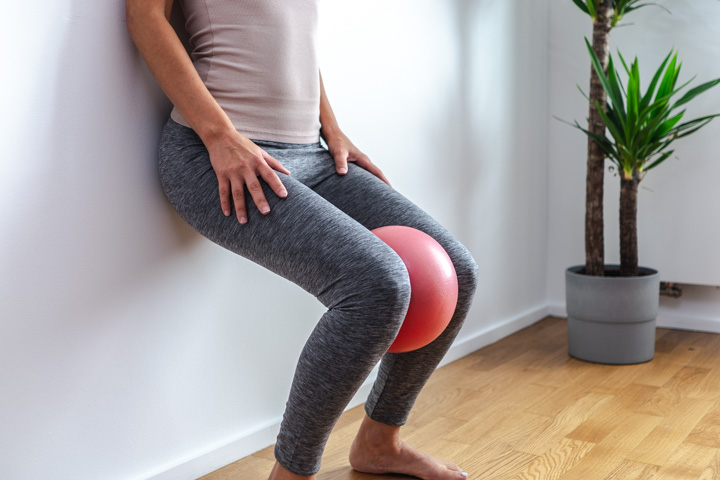My approach to treatment is simple – identify the root-cause, define objective(s) with the patient and create a plan to reach them. The primary objective is to help each patient get the desired result.
Depending on the condition, I may work hands-on during the first few sessions or throughout the entire duration of treatment. Well-tailored home exercise program (HEP) and patient education are also vital in achieving the best result in the shortest possible time. For this reason, I provide visual aids to help patients understand what is wrong, which exercises to do and why they should do them.
Initial Evaluation
You will be asked to describe the main problem and to provide as much information as possible regarding the onset, symptoms, triggers and in case of pain – level on a scale of 0 to 10, and many more.
Afterwards, a physical examination will follow. The aim is to search if there are comparable signs, i.e., signs that correspond to your main complaint and also to assess your treatability. In rare cases, patients might be referred further if they are more suited for other types of treatment or if a given condition requires the attention of another specialist.
Goals and Objectives
A goal will be agreed upon with you by based on what you need the most. This may range from things like, reducing pain below 3/10, discontinue pain killers, sleeping through the night without waking up due to pain, to functional improvements such as forward bend without pain, wearing jacket without pain, being able to brush own hair without pain etc. If necessary, smaller objectives will be set and a realistic timeline agreed on for achieving these milestones.
Plan
Depending on the severity, treatment for a given condition, e.g., low back pain, will require 10 visits spread over 5-8 weeks. I design each patient’s plan of care in 3 overlapping phases:
- Pain/symptom reduction – sessions 1 to 4
- Home exercise program – sessions 2 to 8
- Return to full exertion – sessions 8 to 10
Milestones achieved as the treatment progresses through these phases will be noted and discussed with the patient.
Treatment methods
I use an integrative approach which combines traditional physical therapy with non-traditional methods such as myofascial therapy, needleless transcutaneous acupoint stimulation and a surprisingly simple movement technique, all of which can produce immediate results like pain relief, range of motion improvement etc., in about 7-8 out of 10 patients.
Myofascial therapy
Fascia is a thin layer of connective tissue under the skin which surrounds the entire body and also penetrates the body to support each organ, blood vessel, nerves and muscles. Due to the continuity and interconnections within the fascia system, a change in one part produces a reaction in another part. This explains why the lower can be used to relieve shoulder pain, the foot can be used for relieving knee pain etc.
In this method, each joint, muscles or other musculoskeletal components, has at least 30 other body parts connected to it in certain positions. Stimulating these connected parts in certain positions often produces dramatic results like instant pain relief or reduction, increased joint range of motion, reduction of inflammation and accelerated tissue healing. This works very well for both chronic and acute conditions such as low back pain, neck pain, sprains of the ankle, knee and very importantly the management of tendinitis of shoulder, elbow, wrist etc.
Acpuoint stimulation
Acupuncture is a part of Traditional Chinese Medicine (TCM) dating back to 3000 years ago. It is the penetration of skin with steel needles at acupoints within various energy channels and their activation through specific gentle manipulations to promote the flow of Qi (energy or vital life force).
There are numerous applications of acupuncture and other TCM methods in managing musculoskeletal conditions. One of them is the transcutaneous stimulation of a group of acupuncture points which instantly downregulate overactive nervous system. This collection of acupoints produces instant relief of numbness, tingling sensation and radiating pain down the extremities in conditions such a s sciatica, cervical radiculopathy, thoracic outlet syndrome, carpal tunnel syndrome etc.
This type of treatment is usually pain-free and done with fingers, acupressure pen or electrostimulation and works in 9 out of 10 patients whom I apply it on.
Manual therapy
When indicated, for example in shoulder, wrist and sometime neck conditions etc., I use joint mobilizations to further improve a patient’s range of motion and also reduce pain.
A modified form of high velocity low amplitude (HVLA) traction is part of my evaluation and treatment for mechanical low back pain of sacroiliac origin.
Patient’s feedback during treatment is the main guide as to how much mobilization is necessary. Re-assessment at the end of each treatment helps in monitoring the progress made in relation to both pre-treatment condition and the goal set during evaluation.
Home exercise program
Exercise is a very important aspect of each patient’s plan of care, such that willingness to them is a prerequisite to signing up for treatment. I typically work with two broad categories of exercises – corrective exercises and simple pain-free movements. Corrective exercises are carefully assembled to target specific muscles which often are the root cause of most musculoskeletal problems I treat [see What I Treat]. In addition to these, I also use simple movements which often produce instant pain reduction and range of motion increase. Combining these with the treatment methods described above I am able help 9 out of 10 patients who follow them correctly recover within 5 to 8 weeks.
These exercises account for at least half of what is required to make full recovery and non-compliance usually results in non-recovery or injury reoccurrence.
Disclaimer: Physical therapy evaluation and treatment is not a replacement for an in-depth medical screening. It is advised that you consult your primary care physician or a specialist in orthopaedics for examination and diagnosis prior to coming for an initial evaluation.



